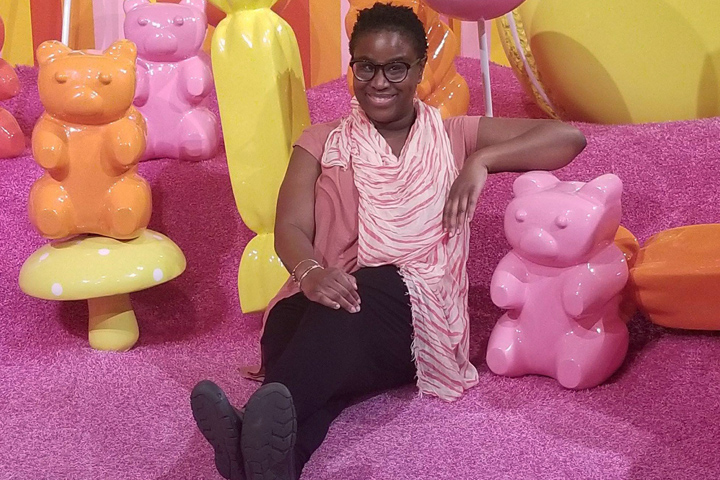A Life-Saving, Life-Changing Diagnosis

- Collection of symptoms leads to pancreatic neuroendocrine cancer diagnosis
- Whipple procedure removes the tumor
- Surgery shows the cancer has spread
- Octreotide injections for maintenance treatment
My primary care doctor literally saved my life.
In the spring of 2016 I went to my doctor, Dr. Kara Durand, with a group of different symptoms. I was prediabetic, but I didn’t think much of it because this runs in my family—I’m black, I was overweight, eating horribly, and enjoying happy hours a couple of times a week. Having prediabetes was not surprising.
But there was more. I would get nauseous and even throw up at times and always had weird digestive issues, but again, that was something that had been a thing all my life so it did not alarm me. I would get bouts of really itchy skin, which I chalked up to allergies (I was SO WRONG). I may have even been slightly jaundiced at times, with yellow eyes, but I thought that was related to lack of sleep.
All of these symptoms were very subtle. But Dr. Durand flagged everything. She told me that my symptoms didn’t add up to just being prediabetic—she thought something more was going on. So I listened to her, and got more tests done. I started with blood tests for my liver and my A1C (to measure my blood sugar over three months). Then I had an MRI, followed by a CT scan. A growth on my pancreas was confirmed on July 20, 2016, via the CT scan. I then had an endoscopic ultrasound biopsy. The biopsy in August was inconclusive, but it was clear the growth needed to be removed so a Whipple procedure was scheduled a little over a month later.
Surgery and Further Treatment
I had a Whipple on September 21, 2016, at Kaiser Permanente Oakland Medical Center (California), with Austin Spitzer, M.D. During the Whipple, the tumor was confirmed to be malignant, and had spread beyond the pancreas. I had pancreatic neuroendocrine cancer and ultimately my spleen was removed along with my pancreas, gall bladder, and part of my intestine.
Because I was found to have lesions on my liver and in other spots, once I recovered from the Whipple I began getting monthly octreotide injections. These injections continue to this day. In addition to standard scans to monitor my condition I get DOTATATE PET scans (a radiopharmaceutical agent) about once a year.
I had genetic testing but my oncologist, Yan Li, M.D., noted that there are not really any targeted biological drugs for this particular cancer, which is common for neuroendocrine tumors.
Life Without a Pancreas
My maintenance and surveillance plans are going well! My body is responding well to the monthly octreotide injections and the remaining lesions are stable and have not grown (fingers crossed).I do have one side effect—immediately after my injection, my skin can get itchy, so I ask whoever gives me the injection *not* to rub the injection site, which is an odd request. I also purposely do lots of walking, so I don’t cramp up.
My lack of a pancreas means that I am now diabetic. I must take insulin (Humalog and Lantus) and I have a continuous glucose monitoring system. I take ZenPep, a pancreatic enzyme, with my meals. I also take high blood pressure meds because the octreotide injection can raise blood pressure.
I have noticed that post-Whipple you tend to have very healthy bowel activity. So after meals I like to be near a bathroom. And if the food I eat is too fatty I can get really oily stools because I have no pancreas.
In general I have to be way more aware of what I eat. It’s easier to prepare my own meals rather than grabbing takeout all of the time so I am aware of the carbs I am ingesting. I have introduced way more veggies too, because they have almost no carbs and my body responds well to them.
September will be a big month for me. I’m going to turn 40 and it’s also my five-year anniversary from when I had the Whipple!
Watch Randi tell her story in “Own Your Health Care Journey.“






